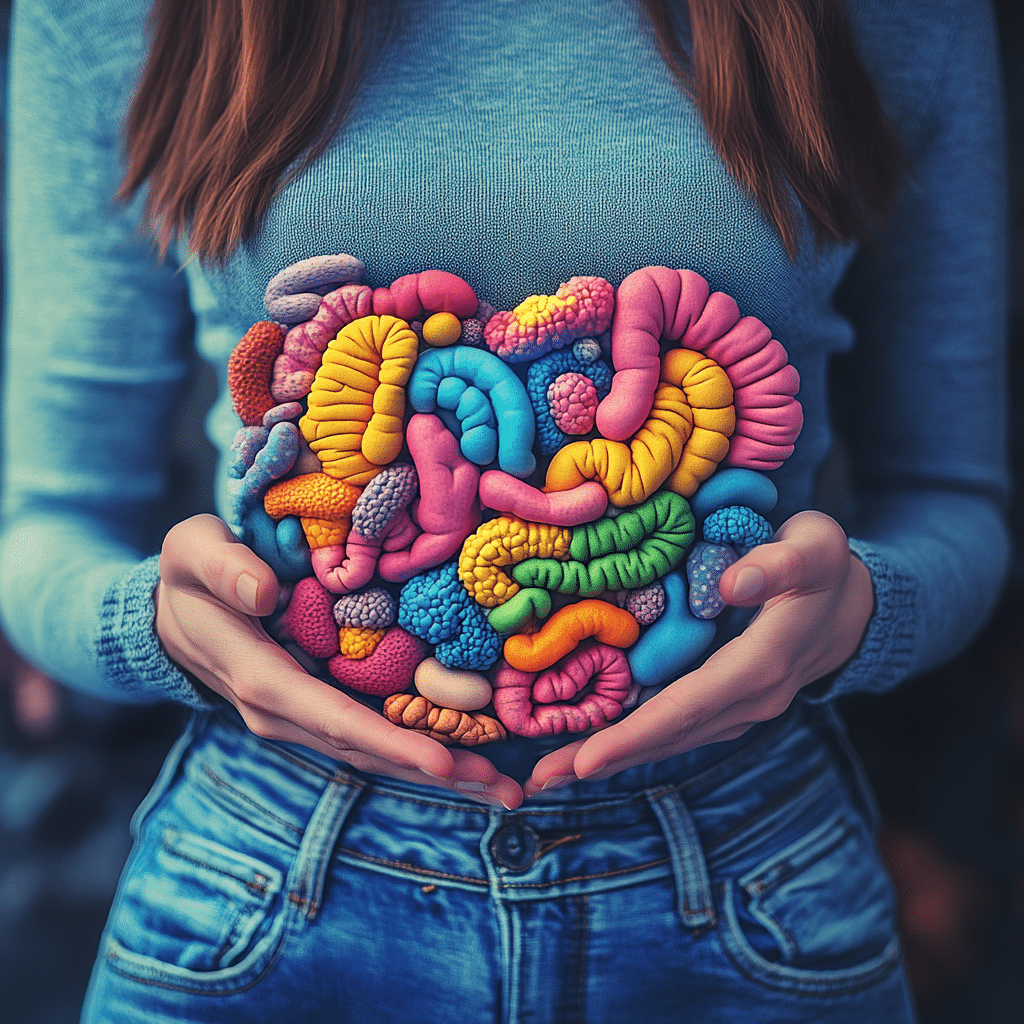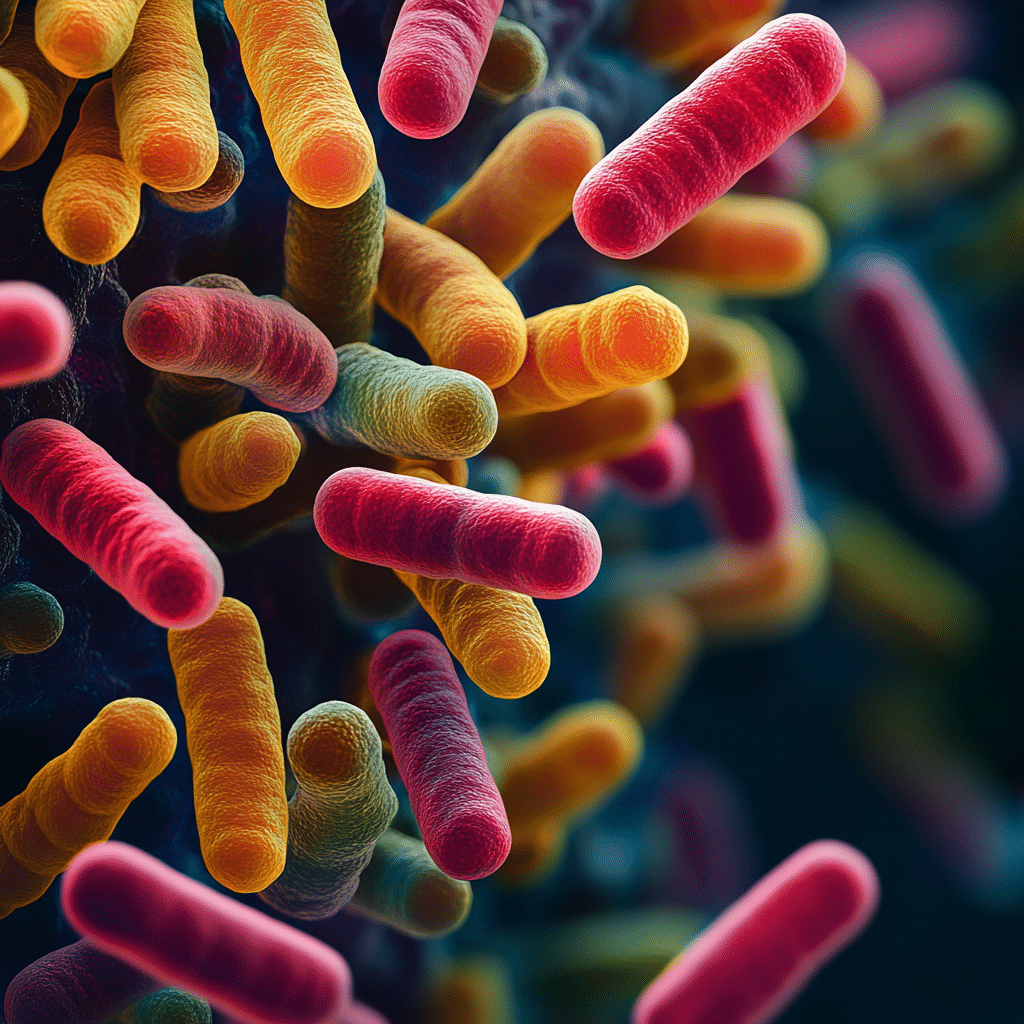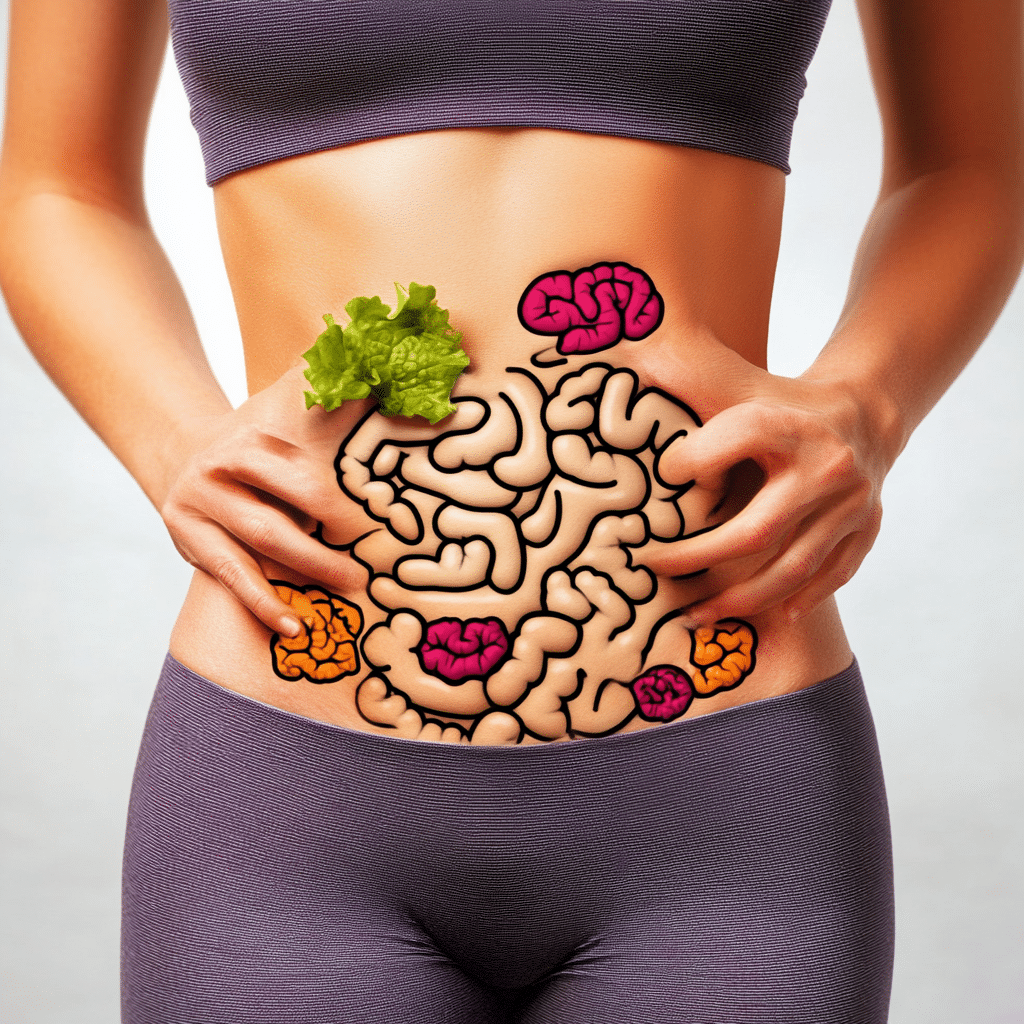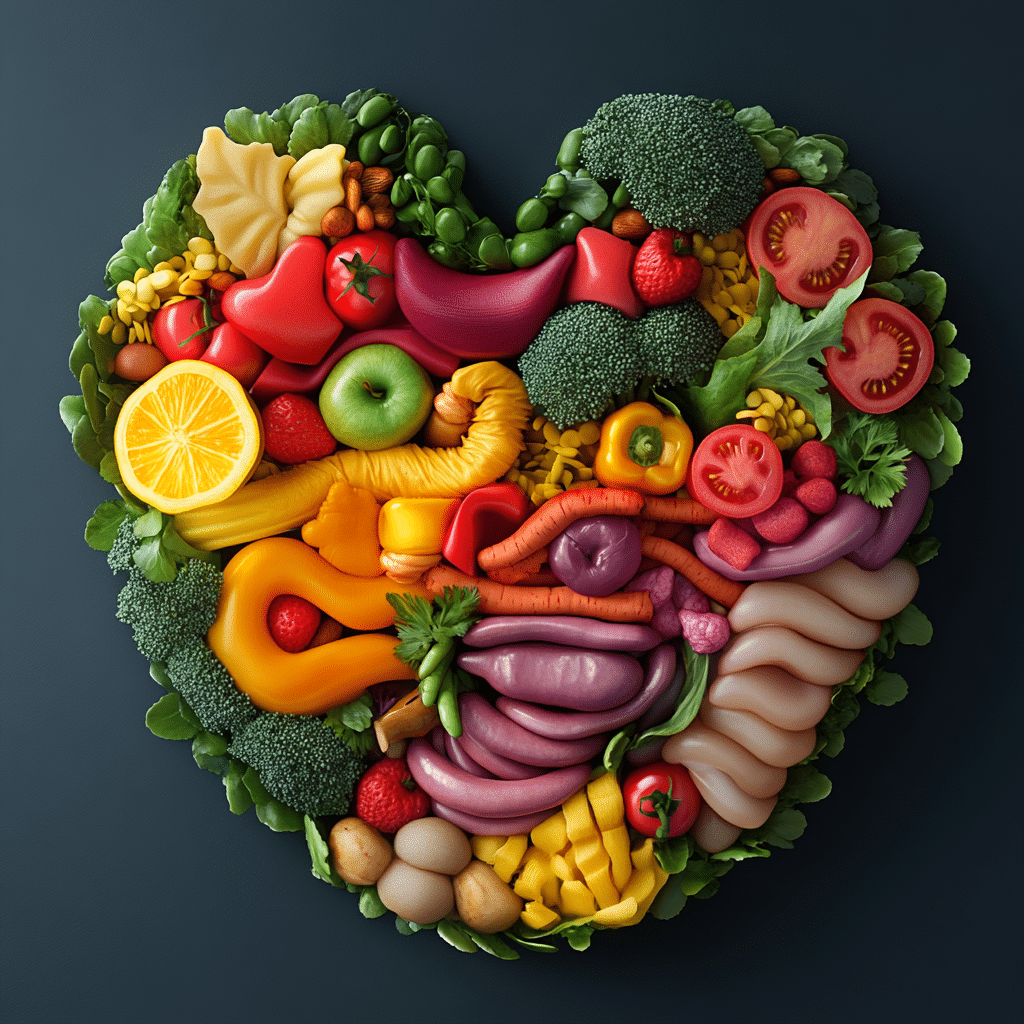Gut microbiota plays a much bigger role in your weight loss journey than you might think. While most people focus on calories, exercise routines, or cutting carbs, research is shining a spotlight on these trillions of tiny organisms living inside your digestive tract. They don’t just help digest food — they can determine how much fat your body stores, how hungry you feel, and how well you burn calories.
In fact, a thriving gut microbiota might be the missing piece in your weight loss puzzle. Scientists have discovered that the diversity and balance of your gut bacteria can dramatically influence your metabolism and long-term fat loss success. If you’ve struggled to shed pounds despite strict diets, your gut could be the hidden culprit — or the secret weapon.
Don’t miss our tips on How Comedian Whoopi Goldberg Weight Loss with Mounjaro Recipe and see how a better gut can change everything.

Table of Contents
What is Gut Microbiota?
The gut microbiota refers to the vast ecosystem of bacteria, fungi, viruses, and other microorganisms living within your intestines. You’re not alone inside your body — you’re actually hosting about 100 trillion microbial guests who play crucial roles in your digestion, metabolism, immunity, and overall health.
When your gut microbiota is healthy and balanced, it supports efficient digestion, helps your body absorb nutrients, produces essential vitamins, and even defends against harmful invaders. However, an imbalanced gut (a condition known as gut dysbiosis) can lead to digestive problems, chronic inflammation, and frustrating weight gain.
Why Gut Microbiota is Called Your “Second Brain”
Ever heard the gut called the “second brain”? It’s not just a catchy phrase. The gut is home to the enteric nervous system, a complex network of neurons that constantly communicates with your actual brain through the gut-brain axis. This connection controls far more than just digestion — it regulates mood, appetite, energy levels, and even how your body responds to stress.
A balanced gut microbiota produces hormones and neurotransmitters like serotonin (the “feel-good” chemical) and short-chain fatty acids that impact how full you feel after meals. If your gut microbiota is healthy, it’s easier to control cravings, eat mindfully, and maintain a stable weight.
The Surprising Link Between Gut Microbiota and Weight Loss
How Gut Bacteria Influence Fat Storage and Energy Extraction
The connection between gut microbiota and fat storage is stronger than you might imagine. Certain types of gut bacteria are highly efficient at breaking down carbohydrates and fibers into short-chain fatty acids (SCFAs), which provide the body with extra calories.
People with an imbalanced gut microbiota—often with a higher ratio of Firmicutes to Bacteroidetes—tend to extract more energy from food, leading to more fat storage, even if they eat the same amount of food as someone else.
In short, your body’s ability to burn or store fat depends heavily on who’s living in your gut.
Check out how simple dietary changes can rebalance your gut and promote weight loss in our feature on Natural Mounjaro Recipe: The Ultimate 4-Ingredient Drink for Weight Loss & Wellness.

Studies Connecting Gut Bacteria Diversity and Weight Management
Research has consistently shown that greater gut microbiota diversity equals better weight management. In a landmark study published in Nature, individuals with high microbial diversity were more resistant to obesity, even when consuming a calorie-rich diet.
Moreover, people with a higher ratio of Prevotella to Bacteroides — bacteria types linked to fiber digestion — experienced greater fat loss when eating a fiber-rich diet. This proves that your gut composition can literally determine how your body responds to what you eat.
Don’t miss our real-life example of changing your gut for the better: Brazilian Mounjaro Recipe: The Hack Everyone is Talking About.
Key Gut Bacteria for Weight Loss: Meet Your Hidden Allies
Akkermansia muciniphila: The Weight-Regulating Bacterium
Among the thousands of species living inside your gut, Akkermansia muciniphila stands out as a major player in weight management. This specific bacterium thrives in the mucus lining of the gut, where it helps strengthen the intestinal barrier and reduce inflammation.
Research shows that higher levels of Akkermansia are associated with lower body fat, better insulin sensitivity, and reduced waist circumference. What’s even more fascinating? Supplementing with pasteurized (heat-killed) Akkermansia, not even live versions, has been shown to offer metabolic benefits without requiring any diet changes.
Supporting Akkermansia growth naturally involves adding more prebiotic-rich foods like onions, leeks, garlic, and asparagus to your diet. And if you’re serious about giving your metabolism a helping hand, fermented foods are a must.
Learn more about gut-enhancing foods by checking out 1-Ingredient Keto Cottage Cheese Chips, and Now I Want Them With Every Meal. They’re a delicious way to support gut health while satisfying snack cravings.
Prevotella vs Bacteroides: The Battle Inside Your Gut
Inside your gut, two bacterial clans are constantly battling for dominance: Prevotella and Bacteroides.
- Prevotella thrives on fiber-rich, plant-based diets. It excels at breaking down complex carbohydrates into beneficial short-chain fatty acids that help regulate appetite and fat storage.
- Bacteroides, on the other hand, are more common in individuals eating high-fat, high-protein Western diets. While they also aid digestion, they aren’t as efficient at fiber breakdown or producing SCFAs beneficial for metabolism.
Studies have found that people with a higher Prevotella-to-Bacteroides ratio experience more effective fat loss when following high-fiber diets compared to those dominated by Bacteroides.
This means your gut composition can predict whether you’ll succeed on a plant-based diet or need another strategy.
Looking for more ideas? Don’t miss our tip on boosting gut diversity naturally: Homemade Mounjaro Recipe: Why Everyone’s Loves It.

Gut Dysbiosis and Obesity: Understanding the Hidden Connection
How Gut Dysbiosis Fuels Weight Gain and Inflammation
When your gut microbiota falls out of balance, the condition is known as gut dysbiosis. In dysbiosis, harmful bacteria thrive while beneficial species decline. This shift can trigger chronic low-grade inflammation throughout your body, making it much harder to lose weight.
One major way gut dysbiosis contributes to weight gain is by increasing the permeability of the gut lining—a phenomenon often called “leaky gut.” Harmful bacterial byproducts like lipopolysaccharides (LPS) slip into the bloodstream, setting off an immune response. Over time, this can lead to insulin resistance, impaired fat burning, and increased fat storage.
Research shows that individuals with obesity tend to have higher levels of Firmicutes and lower levels of Bacteroidetes—an imbalance that promotes more energy extraction from food and more efficient fat storage.
In simple words, if your gut is inflamed and overrun with the wrong bacteria, your body is primed to store fat, not burn it.
Firmicutes vs Bacteroidetes: What Their Ratio Says About Your Health
You might be surprised to know that just two groups of bacteria—Firmicutes and Bacteroidetes—make up around 90% of your gut microbiota. But it’s not just about their presence; it’s about their balance.
- A higher Firmicutes-to-Bacteroidetes ratio has been strongly linked to obesity. Firmicutes are excellent at extracting extra calories from food, leading to more stored fat.
- A higher Bacteroidetes ratio, on the other hand, is often found in lean individuals and is associated with better digestion of fibers and more efficient fat metabolism.
Interestingly, some studies have shown that weight loss naturally shifts this ratio, reducing Firmicutes and increasing Bacteroidetes.
Keeping your gut balanced with more fiber, prebiotics, and a diverse diet is essential for maintaining a healthy ratio and making your body more efficient at fat burning.
Resetting Your Gut for Weight Loss Success
How to Reset Your Gut Microbiota Naturally
If your gut microbiota has been thrown off balance by a poor diet, stress, antibiotics, or lifestyle habits, don’t worry—you can reset it. The gut is remarkably adaptable and responsive to the changes you make.
Here are science-backed strategies to naturally reset your gut and prime your body for effective weight loss:
- Focus on Plant-Based Diversity: The more diverse your plant intake, the more diverse your gut microbiota becomes. Aim to eat at least 30 different types of plants each week.
- Incorporate Fermented Foods: Foods like kefir, kimchi, sauerkraut, and yogurt are rich in probiotics that help replenish beneficial bacteria.
- Reduce Sugar and Processed Foods: These can feed harmful bacteria and promote dysbiosis. Focus on whole, unprocessed foods instead.
- Stay Active: Moderate exercise has been shown to boost microbial diversity independently of diet.
- Manage Stress: Chronic stress can alter your gut environment negatively, so find time for relaxation, mindfulness, and adequate sleep.
Resetting your gut isn’t about taking a magic pill—it’s about building consistent, daily habits that create a fertile environment for good bacteria to thrive.

Foods and Habits That Heal Gut Dysbiosis
To heal gut dysbiosis and encourage weight loss, focus on feeding your “good guys” — the beneficial bacteria. Here’s a simple action plan:
| Healing Foods | Description |
|---|---|
| Prebiotic-rich veggies | Garlic, onions, leeks, asparagus, and bananas feed healthy bacteria. |
| Probiotic foods | Yogurt, kefir, kimchi, and sauerkraut introduce good bacteria. |
| High-fiber grains | Oats, quinoa, brown rice nourish the gut lining. |
| Polyphenol-rich foods | Berries, green tea, dark chocolate help balance inflammation. |
| Omega-3 fats | Salmon, flaxseeds, walnuts help reduce gut inflammation. |
Additionally, lifestyle habits like getting 7–9 hours of sleep, staying hydrated, and reducing alcohol intake play significant roles in gut healing.
Looking for inspiration? Try enhancing your gut reset journey with the Brazilian Mounjaro Recipe with Apple Cider Vinegar—a natural detox booster.
Fiber, Prebiotics, and Probiotics: Your Secret Weapons
Why Fiber Matters More Than You Think for Gut Health
If there’s one nutrient your gut microbiota loves, it’s fiber. Yet, in today’s modern diets, fiber intake is shockingly low. That’s bad news not just for your digestion but also for your weight loss efforts.
Fiber acts as a prebiotic, meaning it feeds the beneficial bacteria in your gut. When these bacteria break down fiber, they produce short-chain fatty acids (SCFAs), which help regulate appetite, improve insulin sensitivity, and reduce fat storage.
Different types of fiber benefit different strains of gut bacteria. Soluble fiber, found in foods like oats and apples, slows digestion and makes you feel full longer. Insoluble fiber, found in whole grains and vegetables, adds bulk to your stool and helps everything move along smoothly.
Studies show that people who consume higher amounts of dietary fiber tend to have a more diverse gut microbiota, better metabolic health, and lower body fat percentages.
Learn more about natural fiber-rich recipes to fuel your gut flora with this delicious Homemade Mounjaro Recipe: Why Everyone’s Loves It.
Best Sources of Prebiotics and Probiotics for a Balanced Gut
Building a strong, balanced gut microbiota isn’t just about probiotics—you also need to give those probiotics the fuel they need to survive. Here’s a quick cheat sheet:
| Category | Best Foods | Benefits |
|---|---|---|
| Prebiotics | Garlic, onions, bananas, leeks, asparagus | Feed beneficial bacteria |
| Probiotics | Yogurt, kefir, kimchi, sauerkraut | Introduce live beneficial bacteria |
| Synbiotics | Foods combining both, like yogurt with added fiber | Maximize gut health synergy |
Eating a mix of prebiotic and probiotic foods daily is one of the most powerful ways to naturally shape your gut toward better fat metabolism and improved weight loss.
Additionally, don’t overlook polyphenol-rich foods like green tea, cocoa, and berries. These compounds act as gut flora boosters, enhancing microbial diversity.
Personalized Weight Loss: Microbiome Testing and Diet Plans
How Microbiome Testing Works for Weight Loss
As we’ve seen, the gut microbiota plays a massive role in how your body handles food, stores fat, and burns energy. But here’s the next level: personalized microbiome testing.
Microbiome testing kits allow you to analyze the composition of bacteria in your gut. With a simple stool sample, these tests provide insights into:
- Which beneficial or harmful bacteria dominate your gut
- Your gut diversity score
- Your body’s inflammatory markers
- Personalized diet and supplement recommendations
Armed with this information, you can fine-tune your diet and lifestyle based on what your gut truly needs — no more guesswork.
Some early adopters have reported easier fat loss, better digestion, improved energy, and even better moods after adjusting their habits according to their microbiome results.
Customized Diets Based on Your Gut Profile
Imagine knowing exactly which foods your gut thrives on. That’s the power of customized diets based on your microbiome testing.
For example:
- If your gut is low in fiber-digesting bacteria like Prevotella, you might benefit from more legumes, oats, and plant fibers.
- If harmful bacteria are overgrowing, adding probiotic-rich foods like yogurt and fermented veggies becomes crucial.
- If you have signs of gut inflammation, an anti-inflammatory diet rich in omega-3 fats, leafy greens, and berries could accelerate fat loss.
Tailoring your nutrition plan based on your gut profile can lead to better weight management, more effective workouts, and a stronger immune system.

7 Ways Your Gut Microbes Influence Your Weight Loss Journey
1 – Gut Bacteria and Fat Burning
Your gut microbiota can directly influence how your body burns fat. Certain bacteria, especially those that produce short-chain fatty acids (SCFAs), boost your metabolism and promote the breakdown of fat stores.
When SCFA production is high, your body becomes better at managing blood sugar, reducing inflammation, and tapping into fat reserves for energy—all crucial for sustainable weight loss.
2 – Gut Bacteria and Appetite Regulation
Ever wonder why some people feel full faster than others? Your gut microbes influence appetite-regulating hormones like GLP-1, PYY, and ghrelin.
- Higher levels of GLP-1 and PYY lead to feeling full sooner.
- Lower ghrelin levels mean reduced hunger signals.
A well-balanced gut supports healthy hormone levels, helping you avoid overeating without feeling deprived.
3 – Gut Microbiota Diversity Improves Energy Extraction
A diverse microbiota breaks down food more efficiently, providing consistent energy and reducing cravings for high-sugar snacks. The better your food is processed, the fewer blood sugar spikes and crashes you experience.
Adding fiber, polyphenols, and prebiotic-rich foods is the best strategy to maintain a rich microbial community.
4 – Gut Inflammation Can Stall Weight Loss
When bad bacteria flourish, they can create inflammation through the gut lining. Chronic low-grade inflammation can disrupt metabolism, increase insulin resistance, and slow down fat burning.
Managing gut inflammation with a clean, anti-inflammatory diet rich in omega-3s and antioxidants is critical for getting past stubborn weight plateaus.
5 – SCFA Production Boosts Metabolism
Short-chain fatty acids like butyrate are produced when gut bacteria ferment dietary fiber. Butyrate has been shown to enhance fat burning, regulate hunger, and improve insulin sensitivity — three key pillars of weight loss success.
The takeaway? Eating more fiber not only improves digestion but also accelerates your metabolic rate naturally.
6 – Hormonal Balance and Gut Health
Your gut microbiota interacts with your endocrine system, helping to balance hormones like insulin, leptin, cortisol, and estrogen. A healthy gut can improve hormonal signals that regulate fat storage and energy use.
Unbalanced guts, however, may lead to insulin resistance and higher fat storage, particularly around the abdomen.
7 – Lifestyle Factors Influence Gut and Weight
Sleep, stress management, and physical activity directly impact your gut microbiota composition. Poor sleep or high stress can reduce microbial diversity, leading to cravings, emotional eating, and metabolic slowdown.
By supporting your gut with healthy lifestyle choices, you set yourself up for easier, more sustainable weight loss.
Lifestyle Factors That Impact Your Gut Microbiota
How Stress, Sleep, and Exercise Influence Gut Health
Your gut microbiota doesn’t just respond to diet. It’s highly sensitive to your lifestyle habits too. Stress, poor sleep, and inactivity can wreak havoc on your gut environment—often in ways that sabotage your weight loss journey.
- Stress increases cortisol levels, which can alter gut permeability and decrease the diversity of beneficial bacteria. High stress often encourages the growth of harmful bacteria, leading to inflammation and fat storage.
- Sleep deprivation can shift your microbiota toward species associated with weight gain. Even just a few nights of poor sleep can reduce the abundance of fat-burning bacteria.
- Exercise supports microbial diversity. Regular, moderate physical activity increases the number of bacteria that produce SCFAs, improving your metabolism and reducing inflammation.
In short, living an active, balanced life keeps your gut—and your waistline—in check.
Practical Tips for a Happier, Healthier Gut
Supporting your gut microbiota daily doesn’t have to be complicated. Small changes lead to big results over time. Here’s a simple action list:
| Habit | Gut Benefit |
|---|---|
| Practice mindful eating | Reduces stress on the gut and improves digestion |
| Get 7–9 hours of sleep nightly | Promotes a healthy microbial balance |
| Exercise regularly | Boosts gut diversity and SCFA production |
| Reduce sugar and processed foods | Prevents feeding harmful bacteria |
| Incorporate daily fiber | Feeds beneficial bacteria for improved fat burning |
By focusing on these simple lifestyle changes, you’ll create a nurturing environment for your gut microbiota—and make your weight loss journey much smoother and more natural.
Conclusion
If you’ve been struggling with stubborn weight despite doing everything “right,” it might be time to stop focusing only on calories and exercise—and start paying attention to your gut microbiota.
Your gut is not just a digestive machine; it’s an active, dynamic partner in your weight loss journey. A balanced, diverse microbiota helps regulate hunger hormones, boost fat burning, reduce inflammation, and improve your overall metabolism.
The exciting part? Small changes can make a massive impact. Adding more fiber, fermented foods, and healthy lifestyle habits can quickly shift your gut environment in your favor. Personalized microbiome testing can also give you even deeper insights into what your body needs to succeed.
So, as you move forward with your weight loss goals, remember: nurturing your gut health isn’t just optional—it’s essential.
Gut Microbiota is key to maintaining a healthy digestive system, strong immunity, and balanced overall health. If you want simple, gut-supporting recipes and wellness tips, follow Best True Homemade on Facebook for daily healthy living inspiration.
Browse a collection of gut-friendly recipes on How To Cook Today on Pinterest and start nourishing your body from within!
4o
Does gut bacteria help you lose weight?
Yes, gut bacteria can absolutely influence your ability to lose weight. A healthy, balanced gut microbiota supports better metabolism, regulates appetite hormones, and enhances fat-burning processes through the production of short-chain fatty acids (SCFAs). Certain beneficial bacteria can help curb cravings, reduce inflammation, and improve how your body handles sugars and fats, making it easier to shed pounds naturally.
Does biome work for weight loss?
Yes, your biome—or gut microbiota—plays a direct role in weight management. People with a diverse, healthy biome are generally better at maintaining a healthy weight. Specific bacterial strains can affect how many calories you extract from food, how much fat you store, and how easily you feel full after meals. Balancing your biome through diet, probiotics, prebiotics, and lifestyle changes is a powerful strategy for sustainable weight loss.
How do I reset my gut to lose weight?
Resetting your gut microbiota for weight loss involves restoring balance through diet and lifestyle. Start by eating a wide variety of fiber-rich vegetables, incorporating fermented foods like yogurt and kimchi, reducing processed foods, and managing stress levels. Regular exercise and good sleep hygiene also promote microbial diversity. These steps can help tip your gut environment back toward beneficial bacteria that support fat burning and appetite regulation.
How does gut microbiota affect obesity?
An imbalanced gut microbiota—often called gut dysbiosis—is linked to higher rates of obesity. When harmful bacteria dominate, they can cause low-grade chronic inflammation, insulin resistance, and increased fat storage. Studies show that obese individuals often have a higher ratio of Firmicutes to Bacteroidetes, leading to more calories extracted from food and easier fat accumulation. Supporting a healthy gut with fiber, probiotics, and anti-inflammatory foods can significantly lower obesity risks.
